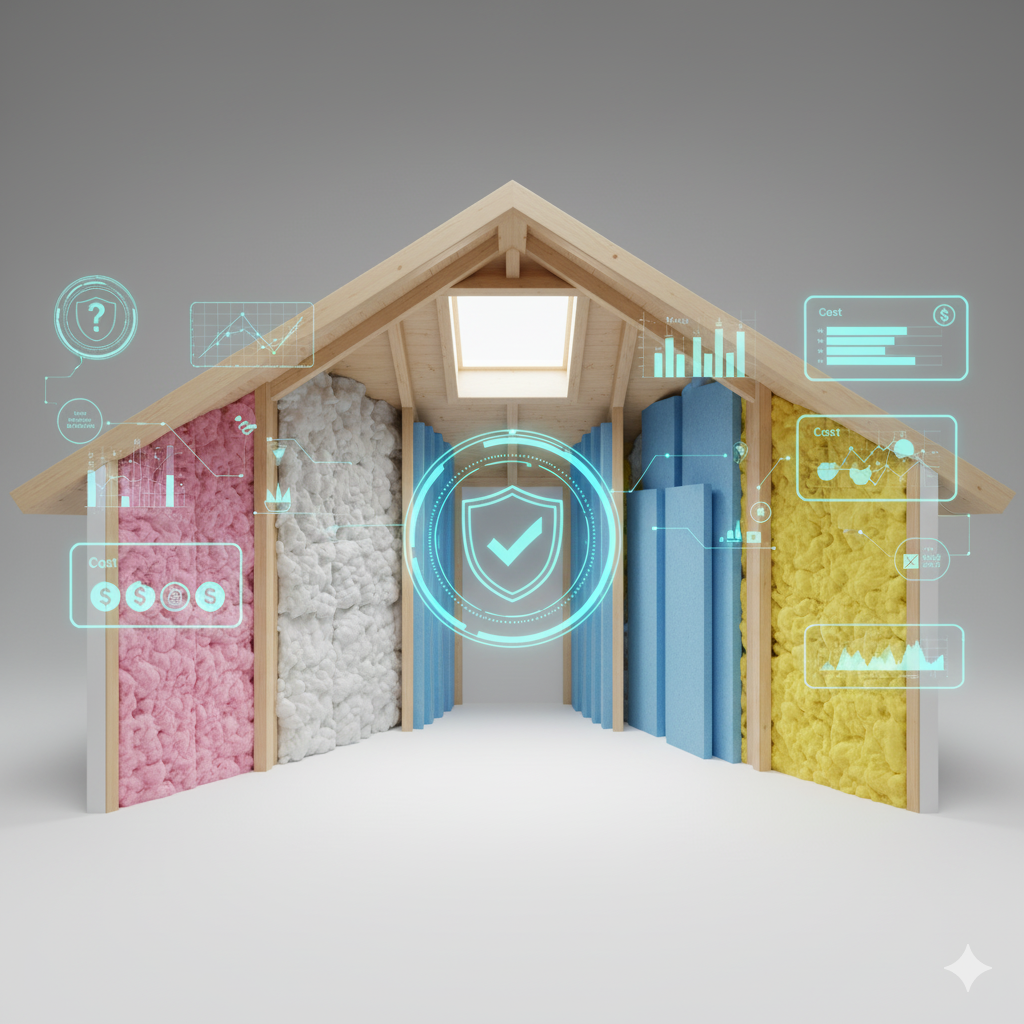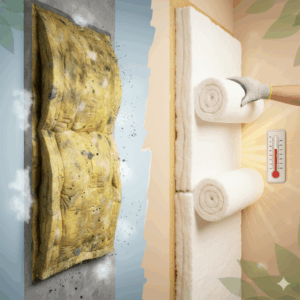Insulation is one of the most effective ways to keep a home energy-efficient and comfortable. It helps regulate indoor temperatures, reduces strain on HVAC systems, and lowers utility bills. But with many options available, homeowners often wonder: what is the best type of insulation for my property?
The answer depends on your budget, climate, and where the insulation will be installed. Below, we break down the most common materials and how to determine the right fit.
Why Insulation Choice Matters
Good insulation prevents heat from escaping in winter and keeps it out in summer. Without it, your home may face:
- Rising energy costs
- Uneven indoor comfort
- Excess wear on heating and cooling systems
- Possible moisture or pest issues
If your home already feels drafty or your bills are increasing, it might be time to check when to replace your home insulation.
Types of Insulation Explained
Here are the main options homeowners consider:
Fiberglass
Lightweight and affordable, fiberglass is widely used in walls and ceilings. It comes in batts, rolls, or loose-fill and provides dependable performance when installed correctly.
Spray Foam
Applied as a liquid that expands into foam, this option seals air leaks and provides high thermal resistance. While it costs more upfront, it offers excellent long-term efficiency.
Cellulose
Made from recycled paper, cellulose is treated for fire resistance and blown into spaces. It’s an eco-friendly solution that works well for older homes needing upgrades.
Mineral Wool
This material is dense, durable, and naturally fire-resistant. It’s often chosen for homes where both safety and soundproofing are important.
Rigid Foam
Sold in board form, rigid foam delivers a high R-value per inch and performs well in basements, foundations, and exterior applications.
Quick Comparison Table
| Insulation Type | Best Use | R-Value per Inch | Advantage | Drawback |
| Fiberglass | Attics, walls | 2.2–2.7 | Affordable, widely available | Can irritate skin |
| Spray Foam | Walls, small gaps | 3.5–6.5 | Airtight seal, energy savings | Higher cost |
| Cellulose | Attics, retrofits | 3.2–3.8 | Eco-friendly, airflow control | May settle |
| Mineral Wool | Walls, floors | 3.0–3.3 | Fire-resistant, soundproofing | Pricier |
| Rigid Foam | Basements, exterior | 4.0–6.0 | Moisture resistant, durable | Harder to install |
How to Choose the Right Option
When selecting the best insulation, consider:
- Climate Zone – Homes in colder areas need higher thermal resistance. Our guide on recommended home insulation R–values explains the right levels for each region.
- Budget – Fiberglass and cellulose are economical, while spray foam and rigid foam cost more but provide greater efficiency.
- Application Area – Some materials work better for walls, while others are suited for an attic insulation type project.
- Sustainability – For eco-conscious choices, cellulose and mineral wool are solid picks.
Benefits of Upgrading
Installing or upgrading insulation delivers multiple advantages. The Top 5 Benefits of Upgrading Your Home’s Insulation include lower bills, improved comfort, healthier indoor air, longer HVAC life, and better resale value.
Final Thoughts
The best type of house insulation depends on your home’s design, local climate, and personal priorities. Fiberglass and cellulose remain reliable and budget-friendly, while spray foam and rigid boards provide premium performance. Mineral wool adds safety and soundproofing where needed.If you want professional guidance and proper installation, Guardian Home Energy can help you choose and install the right solution with confidence.





